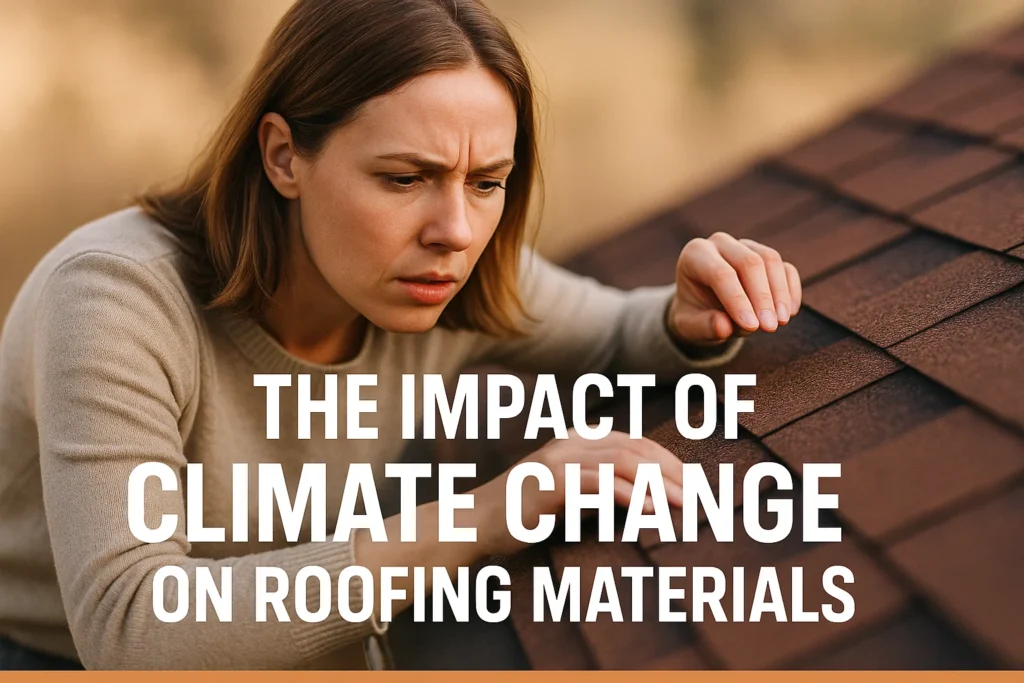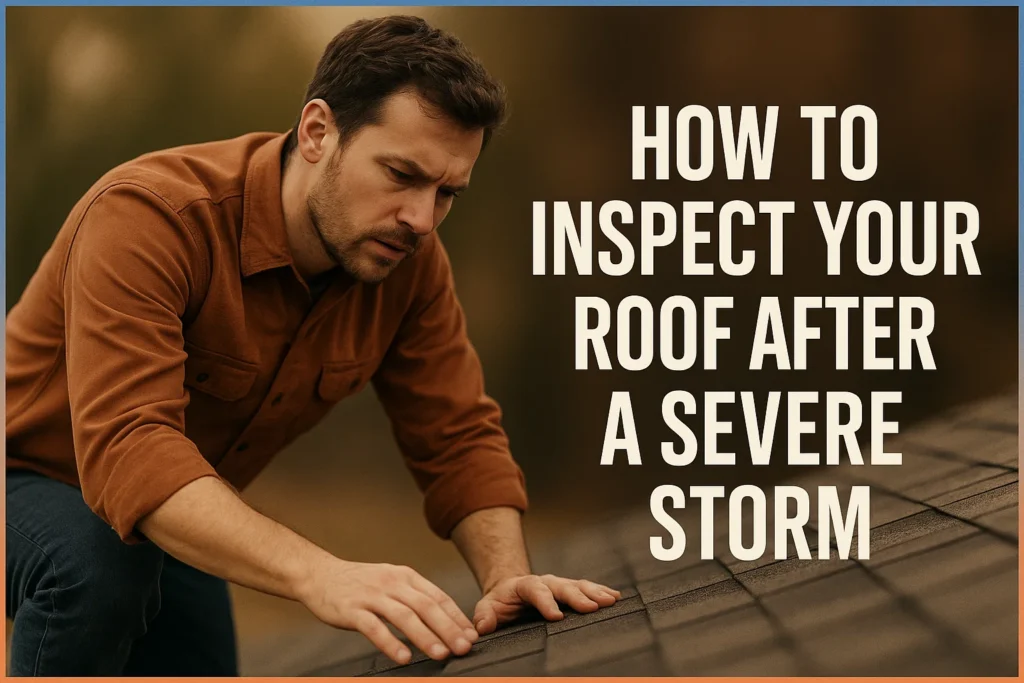Roof issues are not always clear. Minor problems, such as a loose shingle or a small water stain, may indicate more extensive hidden damage. If left unattended, these minor issues may result in leakages, molds, and costly structural fixes. Have you noticed some alarming signs, or just want to be proactive? Understanding when and why roof repair is needed is the initial step to defend your home. This comprehensive article covers signs you need roof repairs, how often you should inspect your roof, and when it is time to hire a professional.
10 Red Flags That Mean You Need Roof Repairs Now
Not all roof damage is dramatic. Some issues develop slowly over time and are easy to miss. Here are 10 clear signs your roof may need immediate attention.
1. Water Stains on Ceilings or Walls
- Yellow or brown stains often indicate a hidden roof leak.
- Check the upper floors and corners where leaks often start.
2. Missing or Damaged Shingles
- Wind or storm damage can loosen or remove shingles.
- Exposed areas make your roof more vulnerable to leaks.
3. Curled, Cracked, or Buckled Shingles
- These signs often mean your shingles are aging or weather-damaged.
- Curled edges allow water to seep underneath.
4. Sagging Roof Areas
- A drooping roof line suggests trapped moisture or structural issues.
- Needs urgent inspection to avoid collapse risk.
5. Visible Mold, Moss, or Algae
- These growths trap moisture and can slowly degrade roofing materials.
- Often found in shaded or poorly drained areas.
6. Granules in Gutters or Around Downspouts
- Asphalt shingles lose granules as they age.
- Excess granule loss means your roof is less protected from UV and rain.
7. Sunlight Peeking Through Attic
- Daylight in your attic = gaps in your roofing material.
- Check for visible holes, especially around roof joints.
8. Flashing Damage Around Chimneys or Vents
- Damaged flashing allows water to enter at weak points.
- Often goes unnoticed until leaks appear.
9. Increasing Energy Bills (Poor Insulation)
- Heat loss from roof leaks can raise heating and cooling costs.
- Damaged roofs reduce energy efficiency.
10. Age of the Roof (15+ Years Old)
- Most roofs last 15–30 years, depending on materials and maintenance.
- An aging roof may show signs of wear even without visible damage.
Why Timely Roof Repairs Matter
In the case of roofing, time is not only money, but it is protection. A simple problem, such as a lost shingle or a minor leak, when neglected, can result in a big and costly problem. Most homeowners take the warning signs of a damaged roof lightly, thinking that it can be postponed to another season or budget cycle. However, weather, wear, and water do not wait. Homeowners can take proactive measures to ensure that the value and the structural integrity of their home are maintained. But what happens when roof repair is delayed? We will find out below.
The Hidden Cost of Ignoring Small Damage
- Small leaks may cause saturation of insulation, resulting in energy wastage.
- Water can move behind walls and ceilings, causing mold and mildew growth.
- Neglected problems require interior repairs in addition to roofing repairs.
- Damage due to deferred maintenance may not be covered by home insurance.
How Delays Lead to Bigger Problems
- Extended exposure to moisture can weaken structural elements such as rafters and decking.
- The repairs that used to cost several hundred dollars can end up costing thousands.
- Unchecked leaks may spread and affect electrical or drywall.
- The element of time may transform a patch job into a new roof.
How Often Should You Inspect Your Roof?
Your roof forms the first line of defense between your home and the outdoors, and it is one of the most poorly maintained parts of your home until something stops working. You should inspect your roof regularly:
Seasonal Roof Checks
- Check at least twice a year–usually in spring and fall.
- Inspect for damage caused by winter ice and snow and summer sun.
- Check for missing shingles, debris in the gutters, and on the roof.
After Storm Inspections
- Inspect the roofing system after the downpour, hail, or windstorms.
- Check blown-off shingles, dented flashing, or punctures.
- Early warning allows you to take action before water damages occur.
DIY vs. Professional Evaluations
- DIY checks are useful in identifying apparent problems, such as missing shingles.
- Experts can detect concealed deterioration, water penetration, or weak points.
- Experts also provide documented reports that are useful in insurance claims.
What to Do If You Notice Any of These Signs
Any of the red flags? Here is what you may do next to avoid further damage.
When to Call a Roofer
- Contact a licensed roofer when you notice any structural damage, active leaks, or mold.
- Experts will be able to determine the entire scope of the problem and suggest modifications.
Quick Fixes vs. Full Repairs
- Temporary solutions: roofing tape or tarps
- Long-term solutions: replacement of shingles or the re-flashing of areas.
What to Expect from a Roof Inspection
- A roofer will examine the entire roof, attic, insulation, and flashing.
- You will get a report on required repairs and estimated cost.
Need Emergency Roof Repairs
When the roof leaks all of a sudden or a storm damages it, time is of the essence. You may have discovered a leak at some crazy time in the morning, or a tree may have fallen during a storm; a roofing partner that you can rely on can assist.
Why Faver Roofing Is the Local Roofing Pro
- Locally owned and operated with strong community trust
- Experienced in handling all types of emergency roof damage
- Licensed, insured, and trained to work on residential and commercial properties
Fast Service, Transparent Pricing, Solid Warranties
- Rapid response times—often same-day service for emergencies
- No hidden fees; upfront pricing and honest recommendations
- All repairs are backed by strong warranties for peace of mind
Book a Free Roof Inspection Today
- Easy scheduling online or by phone
- No-obligation roof assessments with detailed repair options
- Ideal for homeowners who suspect damage but aren’t sure what to do next
Conclusion
One of the smartest things that a homeowner can do is to stay ahead of roof damage. From regular inspection or understanding when to call professionals, each of these steps will save you from expensive repairs in the future. Leave it to a local professional such as Faver Roofing to help you maintain your roof in excellent condition, rain or shine.
FAQs
Temporary DIY repairs, such as covering the area with a tarp or roofing tape, will assist in avoiding additional damage. However, it is always better to call a professional to get a long-lasting and secure decision.
The majority of the policies provide coverage for storm or impact roof damage. It is best to note the problem and contact your insurance company as soon as possible.
Put buckets under leaks, and cover the open portions with plastic sheets or tarps (only when it is safe to do so), and relocate valuables out of the damaged areas. Never climb on the roof in stormy weather or when it is windy.







